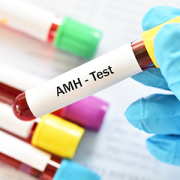Whole genome sequencing solves precocious puberty case

By conducting whole-genome sequencing, doctors were able to discover the cause of a patient’s severe precocious puberty.
A true medical anomaly — a patient with severe precocious puberty starting in infancy later developed bilateral testicular tumors. Despite extensive testing at multiple other hospitals, no one had been able to understand the underlying cause of his precocious puberty. That is until now, through a study led by Andrew Dauber, M.D., M.M.Sc., chief of Endocrinology at Children’s National Hospital.
The hold-up in the field
Before receiving care at Children’s National, the patient’s diagnostic workup was limited by genetic testing modalities and the ability to enroll him in an innovative research protocol.
Moving the field forward
“We were able to enroll the patient in a research protocol that allowed them to sequence his whole genome,” says Dr. Dauber. “Both in a DNA sample from his blood as well as in a sample from one of his testicular tumors, which was being removed surgically.”
Dr. Dauber then performed an analysis of the genome data and found that the patient had a mutation in the luteinizing hormone receptor (LHR), which was present in the testicle but not in his blood. This is called a somatic mutation. The LHR receives the signal from the pituitary gland, which tells the testicle to make testosterone. In this case, the LHR is always turned on, which makes him develop Leydig cell tumors in his testes, overproducing testosterone, causing him to have very early puberty.
By conducting whole-genome sequencing of the tumor and blood samples, the patient was confirmed to have bilateral, diffuse Leydig cell tumors harboring the somatic gain-of-function p.Asp578His variant in the LHCGR gene.
This mutation had been identified before in patients with isolated tumors but never in someone with diffuse bilateral tumors.
The patient benefit
By using cutting-edge genomic approaches, medical providers can identify unknown causes of endocrine disorders. It also stresses the importance of the clinical team working with translational researchers to determine answers for patients.
“With a more definitive diagnosis and understanding of what these tumors are, researchers can better counsel the family about the treatment options,” says Dr. Dauber. Other members of the Children’s National team that contributed to this work include Seth Berger, M.D., Ph.D.; Daniel Casella, M.D.; and Emmanuèle C Délot, Ph.D.
You can read the full study, Precocious Puberty in a Boy With Bilateral Leydig Cell Tumors due to a Somatic Gain-of-Function LHCGR Variant, in the Journal of the Endocrine Society.










